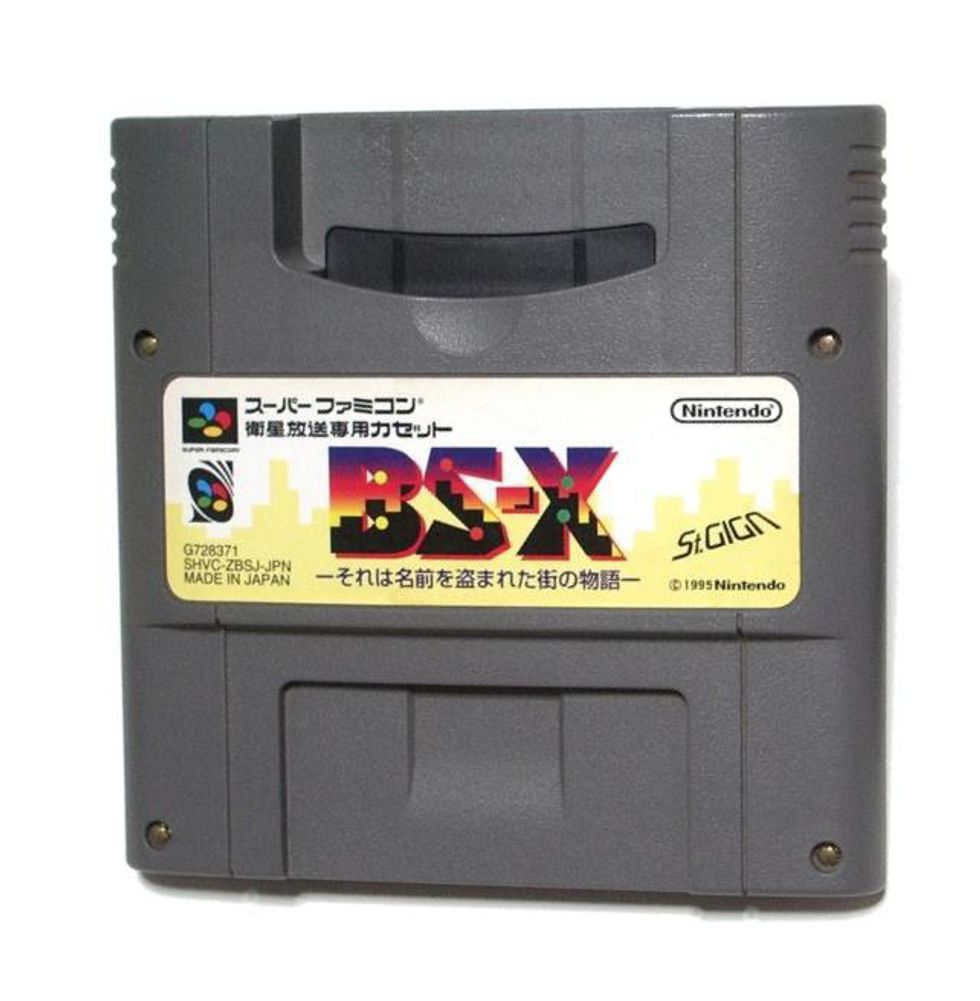Over the years, Nintendo has become known as the experimental company in terms of gaming hardware design. By this point, many of us are already accustomed to their trailblazing approaches to motion control with the Wii, or touchscreen gaming with the handheld DS family, but many in the West aren’t familiar with one of their most interesting experiments: the Satellaview.
In 1995 Nintendo joined forces with St.Giga, a satellite radio service in Japan dedicated to playing ambient and New Age music. While this may not sound like the most sensible combination in ‘90s gaming, Nintendo had a plan. Through this collaboration, the Satellaview was born, a satellite gaming peripheral designed to broadcast games and events to players across Japan.
The Satellaview attached to the expansion port on the bottom of the Super Famicom console (Japan’s Super Nintendo) and ran through the same wiring as a satellite television. Nintendo designed the games and planned the events while St.Giga was left in charge of data maintenance, server managements, and the sound broadcasting of “SoundLink” games.
These “SoundLink” games allowed Nintendo and St.Giga to circumvent the Super Famicom’s low quality audio systems and take advantage of satellite broadcasting’s higher quality sounds. Music and announcer narration would be broadcast live to gamers as they played whatever game had been scheduled for that hour. The games were positioned on a fixed time slot called the Famicom Hour, which worked like a television schedule where gamers “tuned in” to download the broadcasted game, and play them alongside the live music and narration.
This is where the concerns with the Satellaview come in. Due to the impermanent broadcast nature of these games, they pose a huge problem in terms of preservation. Without physical copies released at the store, the only way to preserve a Satellaview game is to keep it saved to whichever memory cartridge it was originally broadcast to. While this may not seem like a major issue, the problem lies in the fact that each of these memory paks only held about one game, meaning that to keep a game the player would have to never use its memory pak to download another broadcast, as it would rewrite the previous file. Because of this there are a great deal of Satellaview games that are either no longer available or cobbled back together by online communities such as some of the Legend of Zelda events.
Another problem arises in terms of background music and narration. Since Nintendo sought to achieve higher sound quality through live broadcasting the only way to preserve the music and announcer’s narration was to actually record the sounds yourself. Since most people playing a videogame don’t think to set up a tape recorder there are quite a few games where the game itself has been preserved, but there is a distinct lack of music in some sections.
The Satellaview is one of the fascinating stories of 1990s gaming, and a testament to Nintendo’s weird, experimental nature in terms of hardware. It also stands as a strong argument for further preservation efforts in tech and gaming. With St.Giga now long defunct and Nintendo having moved on past its satellite broadcasting experiments, the only way to preserve these games at present is for gamers to piece them back together. Some of these games were released episodically over the course of multiple events, while others lack recorded sounds to reconstruct the announcements and music. Without the continued efforts of preservationists and online fans many of these games would be lost.






















